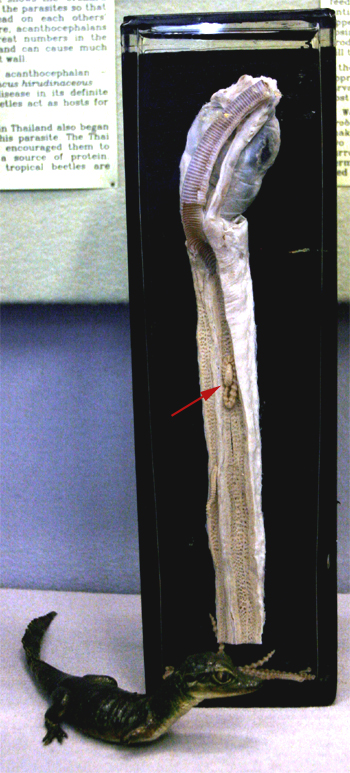
PHYLUM PENTASTOMIDA | |
A small phylum (90 species) related to arthropods. Adults are parasitic in the lungs or nasal passages of vertebrates, usually snakes and crocodiles. A few live in mammals and birds. Some pentastomes have only one host, others have two hosts. Rodents usually serve as intermediate hosts for snake pentastomes; fish for crocodile pentastomes. Adult pentastomes have an anterior cephalothorax and an abdomen with external annulations or rings, which do not reflect any internal segmentation. The body is covered with a thick, chitinous cuticle. Eggs are shed in the host’s faeces. The larvae hatch when an intermediate host ingests the eggs. They have two pairs of stumpy legs, bearing claws, and bore through the gut wall to encyst in the body cavity. Here they feed and grow, moulting periodically, until they become infective. They appear to feed almost exclusively on eosinophils, special defensive cells produced by the host in an attempt to kill the worms. If the intermediate host is eaten by the appropriate carnivorous host, the larvae penetrate the body of the new host and migrate to the lungs.

|  |






